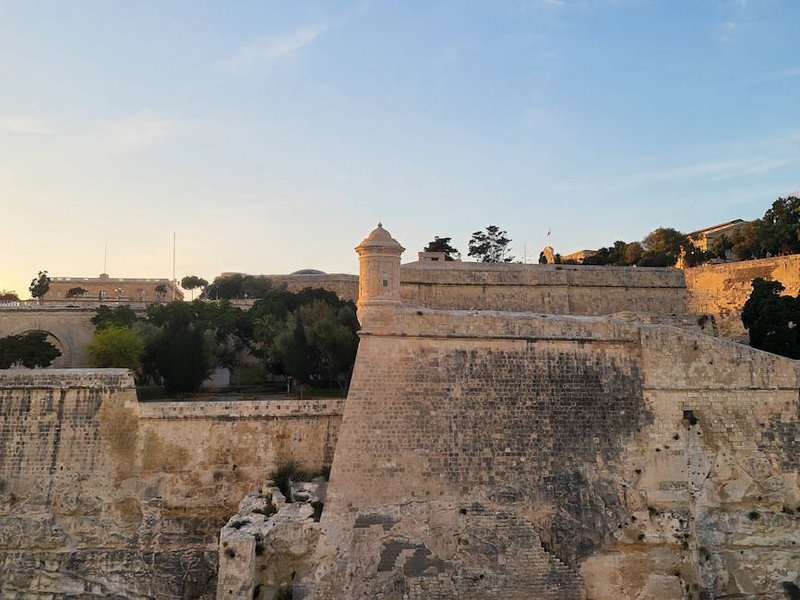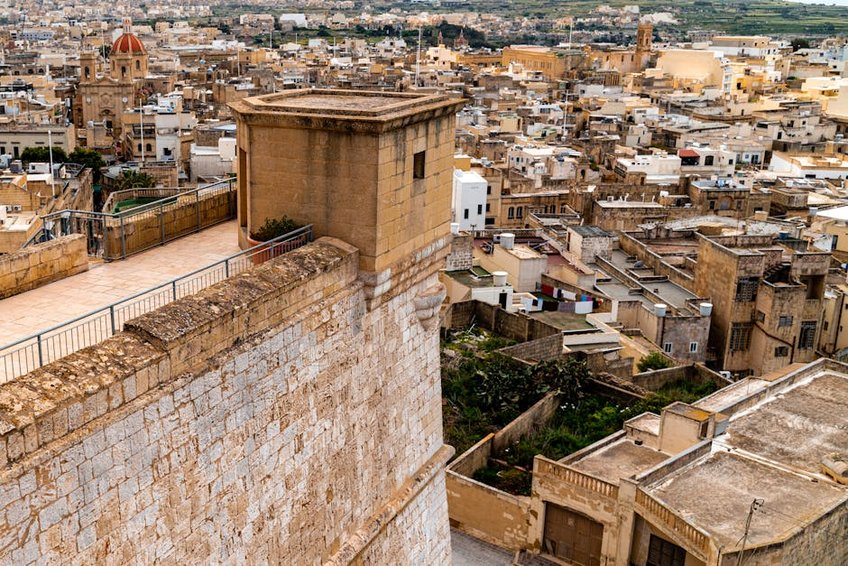Historic Knight Castles in Malta: A Journey Through Time
Exploring the historic knight castles in Malta feels like stepping directly into the pages of a living history book, where the stories of the Knights of St. John are etched into every stone. These formidable fortresses, built between the 16th and 18th centuries, were not just military strongholds but the very heart of Maltese culture, politics, and society during the rule of the Order. As you walk through their massive gates and along their towering ramparts, you’ll understand why Malta’s knight castles are considered some of the most impressive and well-preserved examples of military architecture in the Mediterranean. The strategic importance of these castles shaped the destiny of these islands, defending against Ottoman invasions and pirate raids while creating a unique cultural blend that continues to define Malta today. Whether you’re a history enthusiast, architecture lover, or simply seeking an unforgettable travel experience, these historic knight castles in Malta offer a captivating glimpse into a fascinating era of chivalry, conflict, and cultural exchange.
Historic Knight Castles in Malta Essential Information
Before you embark on your journey to explore Malta’s magnificent knight castles, understanding their historical context and significance will greatly enhance your experience. The Knights of St. John, also known as the Knights Hospitaller, arrived in Malta in 1530 after being expelled from Rhodes by the Ottoman Empire. Emperor Charles V granted them the islands, and they immediately began fortifying their new home against potential threats. Over the next 268 years, they transformed Malta into one of the most fortified places in Europe, creating a network of castles, fortifications, and watchtowers that protected the islands and controlled Mediterranean shipping routes. The most impressive structures include the massive fortifications around the Grand Harbour, the inland fortified city of Mdina, and various coastal fortresses that formed a comprehensive defensive system. Each castle tells a different chapter of Malta’s rich history, from the Great Siege of 1565 to the French occupation and eventual British rule.
Key Historical Periods – What You Need to Know
- The Arrival Period (1530-1565): Initial fortification efforts focused on strengthening existing structures like Fort St. Angelo and building new bastions in Birgu and Senglea
- Post-Siege Construction (1565-1600): Massive building campaigns following the Great Siege, including the creation of Valletta as a fortified capital city
- Baroque Enhancements (1600-1798): Ornate additions and upgrades that blended military functionality with architectural beauty
- British Modifications (1800-1964): Adaptations made during British rule that added new defensive elements while preserving the original knight architecture
- Budget travelers can expect to spend approximately $50-70 per day covering castle entry fees, public transportation, and self-guided touring with packed lunches
- Mid-range visitors should budget $100-150 daily for guided tours, combination tickets, restaurant meals, and occasional taxi transfers between sites
- Luxury experiences including private guides, special access tours, and fine dining will cost $250-400+ per day depending on exclusivity and customization
- Heritage Malta Official Site
- Malta Tourism Authority
Architectural Significance – Key Details
The historic knight castles in Malta represent some of the finest examples of military architecture from the Renaissance and Baroque periods. What makes them particularly remarkable is how they adapted to Malta’s unique topography, using natural harbors, high ground, and coastal formations to create impregnable defenses. The knights employed some of Europe’s best military architects, including Francesco Laparelli and Girolamo Cassar, who designed fortifications that incorporated the latest innovations in defensive warfare. You’ll notice characteristic features like arrow-shaped bastions that eliminated blind spots, thick limestone walls that could withstand cannon fire, intricate gate systems with multiple defensive layers, and underground passages that allowed secure movement between positions. The combination of practical military design and aesthetic beauty creates a unique architectural style that’s distinctly Maltese.

Historic Knight Castles in Malta Planning Your Trip
Planning your visit to Malta’s knight castles requires careful consideration of timing, transportation, and ticket options to make the most of your experience. The islands offer an impressive concentration of historical sites within a relatively small area, but navigating between them efficiently will save you time and energy. Most international visitors fly into Malta International Airport (MLA), which has connections to major European cities and beyond. From there, you can reach Valletta and the main castle sites within 30-45 minutes by taxi, ride-share, or public transportation. I recommend basing yourself in Valletta, Sliema, or the Three Cities area for easy access to multiple castle sites. Purchase the Heritage Malta Multisite Pass if you plan to visit several historical locations, as it offers significant savings compared to individual tickets. Comfortable walking shoes are absolutely essential, as you’ll be exploring extensive fortifications with uneven surfaces and numerous steps.
Best Time to Visit Historic Knight Castles in Malta
The ideal time to explore Malta’s historic knight castles is during the shoulder seasons of April-May and September-October when temperatures are pleasant for walking and tourist crowds are manageable. Summer months (June-August) can be extremely hot and crowded, making extensive outdoor exploration uncomfortable, though early morning visits are still enjoyable. Winter months (November-March) offer cooler temperatures and fewer visitors, but some sites may have reduced hours and you’ll need to prepare for occasional rain. Spring is particularly beautiful as the islands bloom with wildflowers against the golden limestone walls. Avoid major Maltese holidays and festivals if you prefer quieter visits, but consider that some castles host special historical reenactments during these periods that can enhance your experience.
Budget Planning and Costs
Essential Preparation Checklist
Proper preparation will significantly enhance your castle exploration experience in Malta. Start by researching each castle’s opening hours and special events, as these can vary seasonally and some sites close for restoration work. Book tickets online in advance for popular sites like St. John’s Co-Cathedral and the Grand Master’s Palace to avoid long queues. Download offline maps and navigation apps since some castle areas have limited connectivity. Pack a day bag with sunscreen, a hat, and plenty of water—Malta’s sun can be intense even in cooler months. Bring a power bank for your phone since you’ll likely be taking numerous photos throughout the day. If you have mobility concerns, research accessibility options in advance as many castles have limited elevator access and numerous stairs.
Historic Knight Castles in Malta Top Attractions and Activities
Malta’s knight castles offer diverse experiences ranging from massive fortification systems to intimate palace chambers, each providing unique insights into the knights’ world. The most comprehensive experience begins in Valletta, the fortified city built by the knights after the Great Siege of 1565. Here you can explore the Grand Master’s Palace with its magnificent State Rooms and Armory, containing one of Europe’s finest collections of medieval and Renaissance armor. Just across the Grand Harbour, the Three Cities—Vittoriosa, Senglea, and Cospicua—offer a more authentic experience with fewer crowds and equally impressive fortifications. Don’t miss the Inquisitor’s Palace in Birgu, which provides fascinating insights into another aspect of Malta’s history. Further afield, Mdina’s silent city walls and the coastal fortifications of St. Mary’s Tower on Comino offer different perspectives on the knights’ defensive strategies. Each site tells a different part of the story, creating a comprehensive picture of how the knights lived, worshipped, and defended their Mediterranean stronghold.
Must-See Highlights
Your castle exploration should prioritize several key sites that represent the best of Malta’s knight heritage. Start with Fort St. Angelo in Birgu, the knights’ headquarters during the Great Siege and their most important fortification. The recently restored fort offers breathtaking views of the Grand Harbour and excellent interpretive displays. Next, visit the Sacra Infermeria in Valletta, once one of Europe’s finest hospitals, which now houses the Mediterranean Conference Centre. The fortifications of Mdina, Malta’s ancient capital, provide a different experience with their mix of medieval, knight, and Baroque elements. For coastal defenses, explore St. Elmo’s Fort at the tip of Valletta’s peninsula, which played a crucial role during the Great Siege. Finally, don’t miss the smaller but charming St. Agatha’s Tower (the Red Tower) on Marfa Ridge, which offers spectacular views of Malta’s northern coast and Gozo.
Hidden Gems and Local Favorites
Beyond the major tourist sites, several lesser-known knight castles offer equally fascinating experiences with fewer crowds. Fort Manoel on Manoel Island, though partially ruined, provides a romantic setting and excellent photography opportunities, especially at sunset. The Knights’ watchtowers scattered around Malta’s coastline, such as Wied iż-Żurrieq Tower and St. Lucian’s Tower, offer intimate glimpses into the knights’ coastal defense system. In Gozo, the Citadella in Victoria has undergone magnificent restoration and provides a more compact but equally impressive castle experience. For something completely different, visit the Knights’ Cart Tracks at Misrah Ghar il-Kbir, mysterious parallel grooves in the limestone whose origin remains debated but are associated with the knights’ construction projects. Local guides often know about special access opportunities or nighttime tours that aren’t widely advertised, so consider hiring one for at least part of your visit.
Historic Knight Castles in Malta Practical Travel Information
Navigating Malta’s castle sites requires understanding the island’s transportation options and planning your itinerary strategically. The main historical sites are concentrated around the Grand Harbour area, making them relatively accessible from most tourist accommodations. Malta’s public bus system is comprehensive and inexpensive, with routes connecting all major castle sites. The Tallinja card offers unlimited travel and can be purchased at airport arrivals or main bus terminals. For more flexibility, consider renting a car, though be prepared for narrow streets and limited parking in historic areas. Taxis and ride-sharing services are readily available but can add up quickly if used extensively. Many visitors find that a combination of walking, public transportation, and occasional taxis works best. Remember that some smaller castle sites may require hiking or involve uneven terrain, so plan accordingly based on your mobility and fitness level.
| Accommodation Type | Location Advantages | Price Range (USD/Night) |
|---|---|---|
| Luxury Heritage Hotels | Located in restored historic buildings within walking distance of multiple castles | $250-500 |
| Mid-Range Hotels | Central locations with good public transportation access to castle sites | $120-250 |
| Budget Guesthouses | Often in traditional Maltese townhouses near secondary castle sites | $60-120 |
| Vacation Rentals | Self-catering options in residential areas with local atmosphere | $80-200 |


